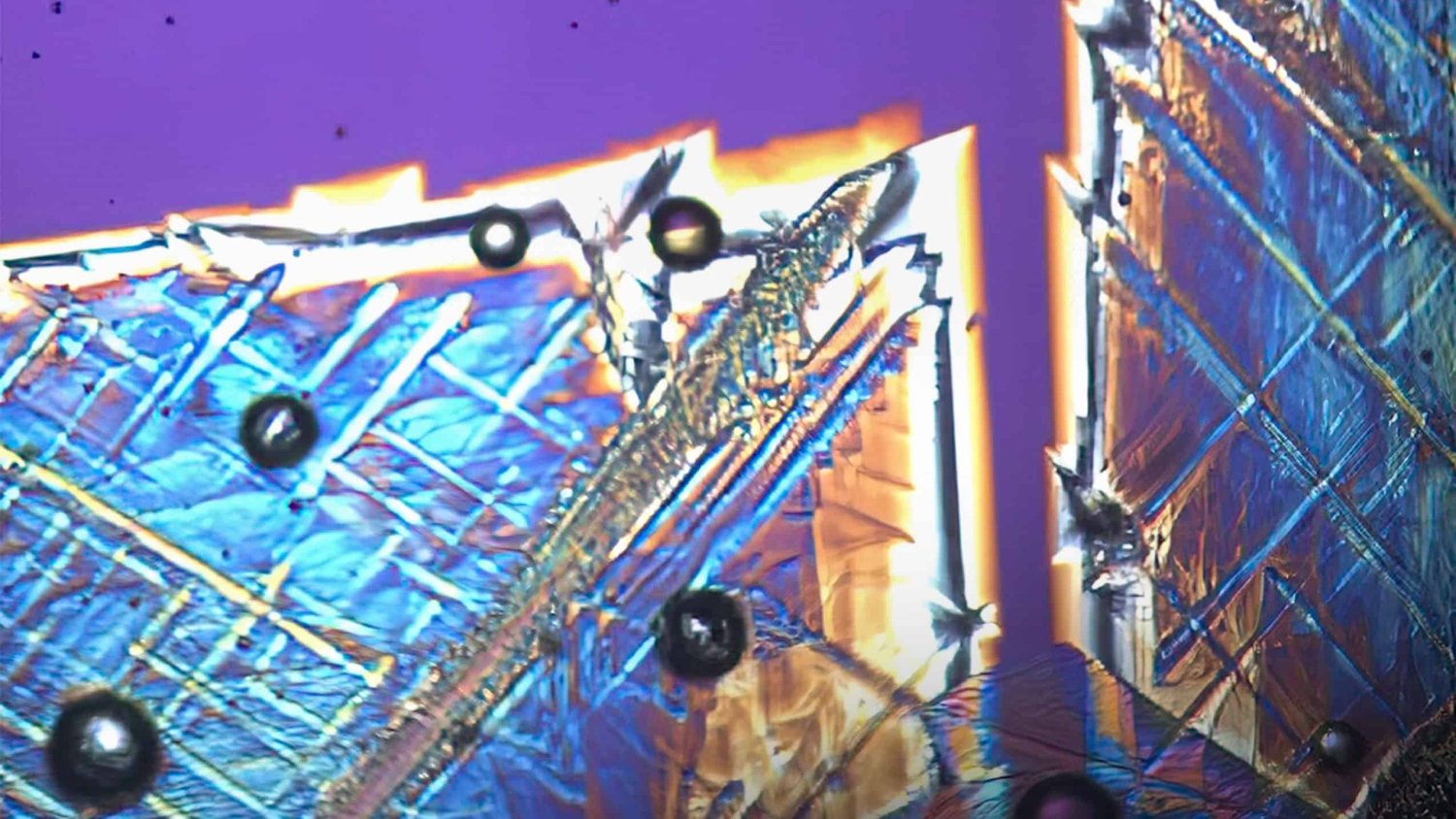New Theory Demystifies Crystallization Process

Remember that old high school chemistry experiment where salt crystals precipitate out of a saltwater solution – or maybe the one where rock candy crystals form from sugar water? It turns out that your understanding of how crystals formed in those solutions might be wrong.
A new theory “demystifies” the crystallization process and shows that the material that crystallizes is the dominant component within a solution – which is the solvent, not the solute. The theory could have implications for everything from drug development to understanding climate change.
“Crystals are ubiquitous – we use them in everything from technology to medicine – but our actual understanding of the crystallization process has been lacking,” says James Martin, professor of chemistry at North Carolina State University and author of a paper in Matter that outlines the theory.
“The prevailing ideas around dissolving and precipitating are that they’re essentially the reverse of each other, but they aren’t. In reality, they are completely different processes,” Martin says.
“Using the high school chemistry experiment with getting precipitate out of a solution as an example: when I dissolve salt (the solute) into water (the solvent), the water is dominant. It dissolves the salt by essentially ripping it apart,” Martin says. “If I then want to grow a salt crystal from that solution, the dominant phase must become the salt – which is the solvent at that point and is the one that forms the crystal.”
Thermodynamic phase diagrams, which describe concentration and temperature-dependent transition points in solutions, can be used to illustrate the new theory, dubbed the transition-zone theory.
The theory demonstrates that crystallization happens in two steps: first a melt-like pre-growth intermediate forms. Then that intermediate can organize into the crystal structure.
“To grow a crystal out of a solution, you have to quickly separate the solvent and solute,” Martin says. “When we refer to the ‘melt’ here, we’re talking about the pure phase of the solvent prior to crystal formation. The difference here is that my theory shows you get better, faster crystal growth by moving your solution toward conditions that emphasize the solvent; in other words, the solvent – not the impurity within it – controls the rate of crystal growth.”
Martin applied his theory to a number of different solutions, concentrations and temperature conditions and found that it accurately describes the rate and size of crystal formation.
“The main issue with previous descriptions of crystallization was the perception that crystals grow by having independent solute particles diffuse to, and then attach to a growing crystal interface,” Martin says. “Instead, it is necessary to understand cooperative ensembles of the solvent to describe crystal growth.”
According to Martin, the important aspect of the new theory is its focus on understanding how solute impurities disrupt that cooperative ensemble of solvent.
“By understanding the interplay of temperature and concentration, we can predict exactly how fast and large crystals will grow out of solution.”
Martin believes the phase diagrams could have important applications for not just crystal formation, but for preventing crystal formation, such as preventing kidney stones from growing.
“Crystals underpin technology – they’re all around us and impact our daily lives,” Martin says. “This theory gives researchers simple tools to understand the ‘magic’ of crystal growth and make better predictions. It’s an example of how foundational science lays foundation for solving all kinds of real-world problems.”
The paper appears in Matter and was supported in part by the National Science Foundation.
-peake-
Note to editors: an abstract follows.
“Solutes don’t crystallize! Insights from phase diagrams demystify the ‘magic’ of crystallization”
DOI: 10.1016/j.matt.2024.08.011
Author: James Martin, North Carolina State University
Published: Oct. 2, 2024 in Matter
Abstract:
Crystals are ubiquitous in nature and technology. Despite the importance of understanding mechanisms of crystallization, conventional theories have proved inadequate. Consideration of phase diagrams reveals that these theories’ failings result from thermodynamically invalid assumptions, including that solutes are the crystallizing phase and that Ksp describes solubility. Thermodynamics requires that the nutrient (solvent) be the crystallizing phase. This perspective provides tools to rigorously characterize a phase diagram to explicitly determine the components of the crystallizing system and the influence of the diluent on the liquidus of the nutrient. It is shown that diluents can change the liquidus of the nutrient but do not participate in the rate-determining step of crystal growth. The rate-determining step is found to be the propagation of the crystalline phase boundary through a melt-like intermediate. This transition-zone theory model accurately describes crystal growth rates for all concentration-temperature conditions and resolves ‘‘riddles’’ of crystal morphology and growth rates.
This post was originally published in NC State News.
- Categories:


